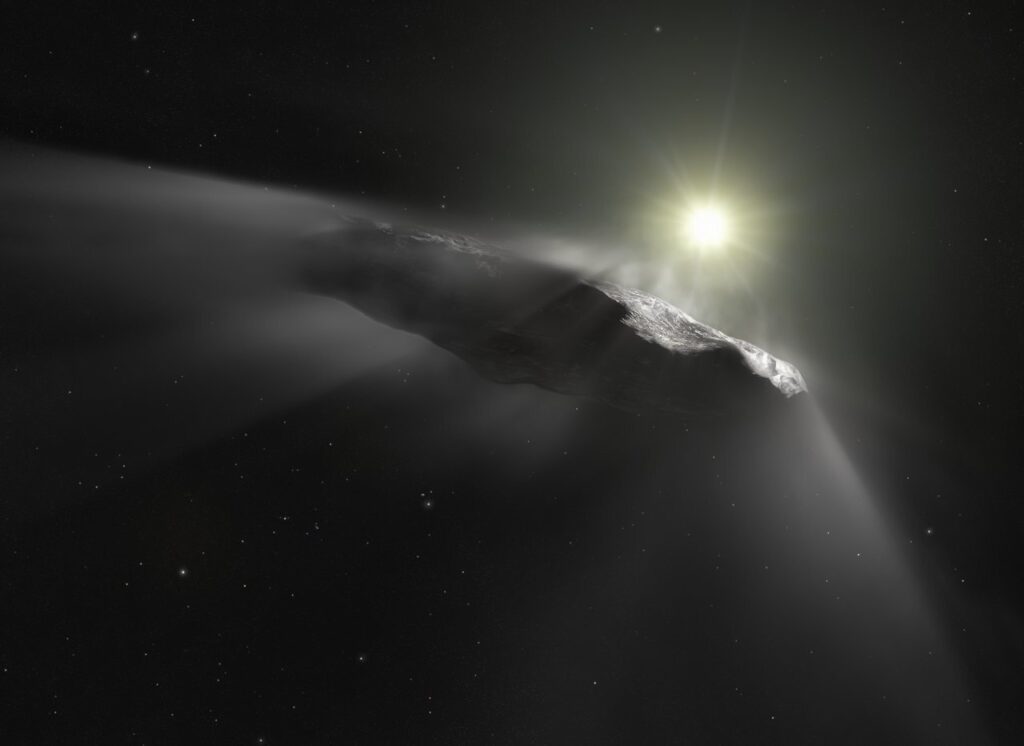
The recent discovery of the third known interstellar object (ISO), named 3I/ATLAS, has reignited discussions within the scientific community about the possibility of these objects being technological in origin. While theories range from speculative YouTube videos to serious academic discourse, the prevailing consensus among scientists is that ISOs are not extraterrestrial spacecraft.
To challenge this consensus, substantial evidence would be required. A new paper led by James Davenport from the DiRAC Institute at the University of Washington outlines potential methods for gathering such evidence. Published on the arXiv preprint server, the paper explores how astronomers might detect “technosignatures”—indicators of technology crafted by an advanced civilization—on current or future ISOs.
Understanding Technosignatures
Technosignatures are a focal point in the search for extraterrestrial intelligence (SETI). These indicators could suggest that an object traversing our solar system is of technological origin. While technosignature searches extend beyond ISOs to include phenomena like Dyson swarms and monoliths akin to those in “2001: A Space Odyssey,” ISOs remain at the forefront of this research due to their recent discovery.
The paper identifies four potential technosignatures that astronomers might detect on an ISO. The first involves the object’s movement. If an ISO exhibits rapid movement unexplained by gravitational forces, it could indicate the presence of a thruster, a potential technosignature. However, slower movements could result from natural forces such as outgassing or radiation pressure.
Non-Gravitational Movements and Spectral Anomalies
The first discovered ISO, ‘Oumuamua, displayed non-gravitational acceleration, sparking significant debate. Although this was likely due to natural forces, it highlighted the potential for misinterpretation. Another technosignature could be unnatural spectra. While it might seem whimsical to imagine aliens painting their starships, more realistically, an ISO could be coated with advanced materials or have features like viewports that alter its spectral signature.
Interestingly, a higher-than-expected infrared signature could also indicate the presence of technology, as computers or other systems aboard an ISO might emit heat detectable by telescopes. To date, the three known ISOs have exhibited only natural spectra.
Shape and Transmission as Indicators
A third technosignature could be an unusual shape. Current designs for human-made interstellar ships often include features like solar sails, which could suggest a non-natural origin if observed. However, directly detecting an object’s shape is challenging and often inferred from its rotation, which can also be influenced by natural processes.
The final technosignature involves transmissions. Signals from a nearby object, whether radio or laser, would provide compelling evidence of technological origin. Despite the challenges, detecting such signals remains a cornerstone of SETI research.
Future Prospects and Technological Advances
One advantage of the proposed methods is that they utilize data already collected by telescopes observing unique objects. While specialized equipment could enhance these efforts, no such missions have been funded yet. However, the future of ISO research looks promising. The upcoming Vera Rubin Observatory is expected to discover up to 50 new ISOs in the coming decades, providing ample opportunities for study.
As astronomers gain experience monitoring these interstellar visitors, they will better understand their typical characteristics, increasing the likelihood of identifying anomalies. It may only be a matter of time before we confirm that we are not alone in the universe.
James R. A. Davenport et al, Technosignature Searches of Interstellar Objects, arXiv (2025). DOI: 10.48550/arxiv.2508.16825
The ongoing exploration of ISOs and the quest for technosignatures represent a fascinating intersection of astronomy and the search for extraterrestrial life. As technology and observational techniques advance, the potential for groundbreaking discoveries grows, keeping the scientific community and the public eagerly anticipating what lies beyond our solar system.





